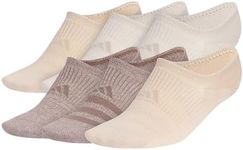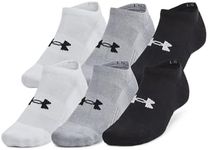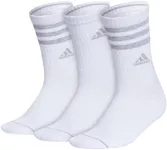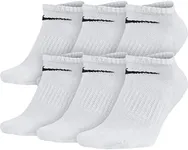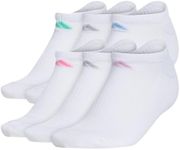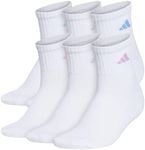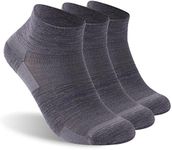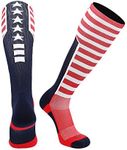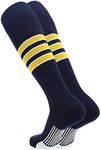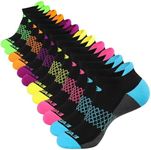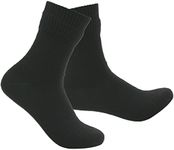Buying Guide for the Best Athletic Socks For Women
Choosing the right athletic socks is crucial for comfort, performance, and foot health. The right pair of socks can prevent blisters, provide support, and keep your feet dry during workouts. When selecting athletic socks, consider the material, cushioning, fit, and additional features that cater to your specific needs and activities.MaterialThe material of athletic socks is important because it affects breathability, moisture-wicking, and comfort. Common materials include cotton, polyester, nylon, and blends. Cotton is soft but retains moisture, which can lead to blisters. Synthetic materials like polyester and nylon wick moisture away from the skin, keeping feet dry. Blends often combine the best properties of different materials. Choose synthetic or blended materials for high-intensity activities to keep your feet dry and comfortable.
CushioningCushioning in athletic socks provides impact protection and comfort. Light cushioning is suitable for activities like running or cycling where you need minimal bulk. Medium cushioning offers more comfort and is good for general workouts and sports. Heavy cushioning provides maximum comfort and protection, ideal for activities with high impact or long durations, like hiking. Select the level of cushioning based on the intensity and type of your activity.
FitThe fit of athletic socks is crucial for preventing blisters and ensuring comfort. Socks should fit snugly without being too tight. Look for socks with arch support and a secure heel fit to prevent slipping. Compression socks can improve circulation and reduce fatigue, making them a good choice for long runs or recovery. Choose a fit that matches your foot shape and the type of activity you will be doing.
HeightThe height of athletic socks can affect comfort and protection. No-show socks are great for low-cut shoes and minimal visibility. Ankle socks provide a bit more coverage and are suitable for most sports. Crew socks offer more protection and are good for activities where you need to protect your lower legs, like hiking. Knee-high socks provide maximum coverage and are often used for compression or specific sports like soccer. Choose the height based on your shoe type and the level of protection you need.
BreathabilityBreathability is important to keep your feet cool and dry. Look for socks with mesh panels or ventilation zones that allow air to circulate. This feature is especially important for high-intensity activities or hot weather. Breathable socks help prevent overheating and reduce the risk of blisters. Choose socks with good ventilation if you tend to sweat a lot or exercise in warm conditions.
DurabilityDurability ensures that your socks will last through many workouts without wearing out. Reinforced heels and toes add extra durability to high-wear areas. High-quality materials and construction also contribute to the longevity of the socks. If you engage in intense or frequent activities, look for socks that are known for their durability to get the best value and performance.
